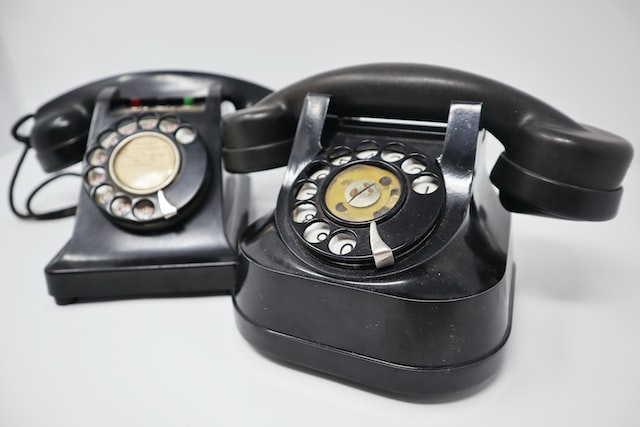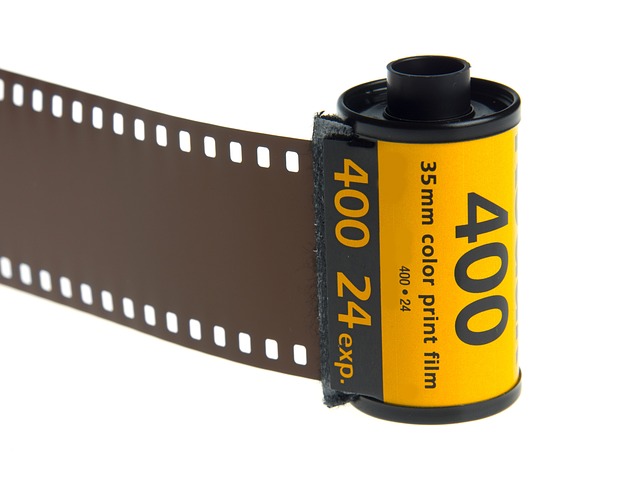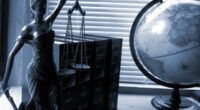After learning about the two different types of early plastics, it is evident that celluloid and Bakelite each had their own unique set of benefits and drawbacks. Celluloid was the first type of plastic to be invented, and it was widely used in a variety of applications such as combs, billiard balls, and even false teeth! However, celluloid was also highly flammable and known to sometimes explode. Bakelite was invented as a more durable and heat-resistant alternative to celluloid. Bakelite was often used in electrical applications due to its insulating properties. However, Bakelite could also be quite brittle, making it susceptible to shattering.
What is celluloid?
(Photo by Jill Marv on Unsplash )

Celluloid is a type of plastic that was first created in the mid-19th century. It is made from cellulose nitrate, a type of cellulose that is chemically modified to create a flammable and moldable material. Celluloid was one of the first synthetic plastics and was widely used in the late 19th and early 20th centuries for a variety of applications, including film, photographic film, combs, buttons, and other small items.
Celluloid was particularly important in the development of motion pictures. The first flexible, transparent film was made from celluloid, allowing for the creation of moving pictures. However, celluloid is highly flammable and has a tendency to degrade over time, leading to safety concerns and preservation challenges. Today, celluloid is no longer widely used due to safety concerns and has largely been replaced by other, safer plastics. However, it remains an important material in the history of plastics and is still used in some niche applications, such as guitar picks and ping pong balls.
What is Bakelite?
(Photo by Call Me Fred on Unsplash )

Bakelite is a type of plastic that was first developed in the early 20th century by Belgian chemist Leo Baekeland. It was one of the first synthetic plastics and was widely used in the early 20th century for a variety of applications, including electrical insulators, radio and telephone casings, jewelry, and other household items.
Bakelite is made from a combination of phenol and formaldehyde, which are chemically reacted to create a hard, durable, and heat-resistant material. It was valued for its electrical insulating properties, as well as its ability to be molded into a wide variety of shapes and colors.
Bakelite was particularly important in the development of the modern consumer culture, as it allowed for the mass production of affordable, durable, and stylish household items. Bakelite jewelry, in particular, was a popular fashion accessory in the mid-20th century and remains highly collectible today.
Today, Bakelite is no longer widely used due to the development of other, more advanced plastics. However, it remains an important material in the history of plastics and is still valued for its unique aesthetic qualities and historical significance.
Celluloid Vs. Bakelite – Key differences
Celluloid and Bakelite are both early forms of synthetic plastic, but there are some key differences between the two materials:
- Chemical Composition: Celluloid is made from cellulose nitrate, while Bakelite is made from phenol and formaldehyde.
- Properties: Celluloid is flammable and can degrade over time, while Bakelite is a heat-resistant and durable material.
- Uses: Celluloid was used primarily in the early motion picture industry, as well as for small items like combs and buttons, while Bakelite was used for electrical insulators, radio and telephone casings, and household items like jewelry and kitchenware.
- Appearance: Celluloid is a transparent or translucent material that can be tinted or colored, while Bakelite is an opaque material that is often characterized by its distinctive brown color.
While both materials played important roles in the development of modern plastics, Bakelite is generally considered to be a more significant technological advancement due to its unique properties and wide range of applications. However, both materials are valued today for their historical significance and are still used in some niche applications.
Uses for celluloid and bakelite
Celluloid and Bakelite are both early forms of synthetic plastic that were widely used in the early to mid-20th century. Here are some common uses for each material:
| Celluloid | Bakelite |
|---|---|
| Motion picture film | Electrical insulators |
| Photographic film | Radio and telephone casings |
| Combs and hairbrushes | Electrical switches and sockets |
| Buttons and other small items | Jewelry and other fashion accessories |
| Early guitar picks | Kitchenware and tableware (e.g. handles for pots and pans) |
| Ping pong balls | Automotive parts (e.g. distributor caps) |
While both materials have largely been replaced by other, more advanced plastics, they remain important in the history of synthetic materials and are still used in some niche applications today. For example, Bakelite is still used in the manufacture of electrical equipment and guitar parts, while celluloid is still used for ping pong balls and some guitar picks.
How do you identify celluloid?
Identifying celluloid can be a bit tricky, as it can be similar in appearance to other plastics and can degrade over time, making it more difficult to distinguish. Here are a few tips for identifying celluloid:
- Look for the “celluloid smell”: Celluloid has a distinctive smell that is often described as a mix of camphor and vinegar. If you detect this smell when examining an item, it is likely made from celluloid.
- Check for transparency: Celluloid is a transparent or translucent plastic, so if you can see through the material, it could be celluloid. However, keep in mind that not all celluloid items are transparent and that some other plastics can also be transparent.
- Look for signs of aging: Celluloid can become discolored, warped, or cracked over time, especially if it has been exposed to heat or moisture. If an item looks like it is in poor condition or is showing signs of aging, it could be celluloid.
- Conduct a burn test: This should only be done by experts, but burning a small piece of the material can sometimes help identify whether it is celluloid. Celluloid will burn with a bright flame and leave a white ash behind, while other plastics may behave differently.
It’s worth noting that celluloid is a flammable material that can be hazardous if mishandled, so it’s important to be careful when handling any potentially celluloid items.
How do you identify Bakelite?
Bakelite is a synthetic plastic material that was developed in the early 1900s. It is characterized by its hard, glossy surface and its ability to retain its shape. Bakelite is often used in jewellery, electrical components, and other objects where durability and aesthetics are important.
To identify Bakelite, look for these characteristics:
- A hard, glossy surface
- A smooth feel
- No seams or cracks
- A deep, rich colour
If you’re unsure if an object is made of Bakelite, you can test it with a hot pin. If the object is made of Bakelite, the pin will not leave a mark.
The advantages and disadvantages of celluloid
Advantages:
- Transparency: Celluloid is a transparent or translucent plastic, which made it ideal for use in early photographic and motion picture film.
- Moldability: Celluloid can be easily molded into a variety of shapes, making it suitable for use in a wide range of applications.
- Low cost: Celluloid is a relatively inexpensive material to produce, which made it a popular choice for mass-produced items like combs and buttons.
Disadvantages:
- Flammability: Celluloid is a highly flammable material that can ignite easily, which made it a safety hazard in some applications.
- Deterioration: Celluloid can degrade over time, especially if it is exposed to heat, humidity, or UV light. As it deteriorates, it can become brittle, discolored, and emit harmful gases.
- Hazardous chemicals: The production of celluloid involves the use of hazardous chemicals like nitric acid and sulfuric acid, which can be dangerous to workers and the environment.
While celluloid played an important role in the early development of synthetic plastics, it has largely been replaced by newer, safer, and more advanced materials. However, it is still valued today for its historical significance and is used in some niche applications, such as ping pong balls and some guitar picks.
The advantages and disadvantages of Bakelite
Advantages:
- Electrical insulating properties: Bakelite is an excellent electrical insulator, which made it a popular choice for use in electrical equipment, including switches, sockets, and other components.
- Moldability: Like celluloid, Bakelite can be easily molded into a variety of shapes, making it suitable for use in a wide range of applications.
- Durability: Bakelite is a hard, strong material that can withstand high temperatures, making it ideal for use in automotive and industrial applications.
Disadvantages:
- Brittleness: Bakelite can be brittle and prone to cracking or chipping, especially if it has been exposed to UV light or heat.
- Aging: Like celluloid, Bakelite can degrade over time, losing its original color and becoming more brittle. This can make it difficult to restore or repair Bakelite items.
- Hazardous chemicals: The production of Bakelite involves the use of formaldehyde, which is a hazardous chemical that can be dangerous to workers and the environment.
Overall, while Bakelite played an important role in the early development of synthetic plastics and remains an important material in some niche applications, it has largely been replaced by newer, safer, and more advanced plastics. However, it is still valued today for its historical significance and is used in some collectible items, such as vintage radios and jewelry.
Is celluloid better than plastic?
Though celluloid is the older of the two materials, Bakelite became more popular in the early 20th century because it was cheaper to produce. But celluloid has a number of advantages over Bakelite that make it the better choice for certain applications.
For one thing, celluloid is more flexible, so it can be molded into thinner and more intricate shapes. It’s also easier to tint and dye than Bakelite, so it can be made in a wider range of colors. And because it’s derived from natural materials, celluloid is biodegradable, while Bakelite is not.
So if you’re looking for a material that can be shaped into delicate designs, comes in a wide array of colors, and won’t pollute the environment when it’s thrown away, celluloid is the better choice.
Featured Image By – Image by Joshua_Willson from Pixabay









